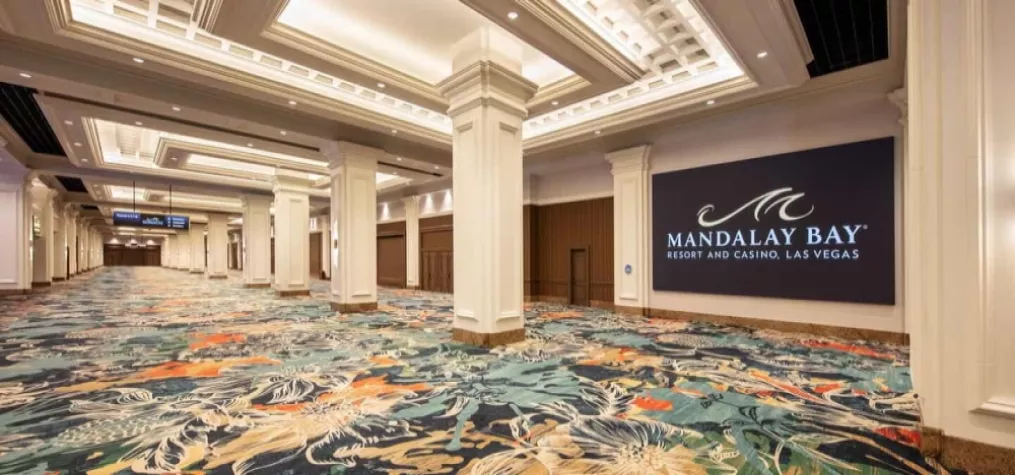As awareness of climate change increases, the public and private sectors face growing pressure to take action. This need for change is being driven not only by consumers but also by legislative and governing bodies.
Germany, for instance, recently introduced an act requiring large companies to observe social and environmental standards across their supply chain.
Despite growing concern for sustainability, the term “sustainability” itself has become a buzzword that risks losing its true meaning. To enact true change, organizations must align with sustainability goals rooted in reality. This is especially important for the events industry.
From the materials used to the energy consumed to the transport required for participants to get to the venue, events have a significant environmental footprint.
The buzzword paradox: finding the truth behind sustainability claims
The ugly truth is that a substantial portion of the events industry still isn’t focusing on sustainability, and if they do, it is often from the perspective of marketing, not from a genuine attempt to make their events as environmentally friendly as possible.
There are many factors that influence the environmental impact of an event, but the main key areas that produce a disproportionate amount of emissions are travel and accommodation. Additionally, many events have marketed themselves as sustainable by overstating the value of small initiatives that have little to no impact.
This is a dangerous approach. Not only does it mislead the public, but it also undermines the credibility of genuine efforts to address climate change.
Fortunately, it’s increasingly difficult for organizations to get away with false sustainability claims. The EU, for instance, is proposing legislation to ban “greenwashing.” Consumers are also getting better at spotting unsubstantiated environmental claims.
To reclaim the true essence of sustainability, event planners must reassess their approach and go beyond surface-level efforts. Rather than treating sustainability as a marketing tool, it should be an integral part of an organization’s ethos, driving meaningful change and inspiring others to follow suit.
A key part of this process is to adopt a comprehensive approach to sustainability that encompasses not only ecological considerations but also social and economic dimensions. By considering all three aspects, event planners can understand and address the broader impact of their events. This holistic approach ensures that events contribute positively to the well-being of all stakeholders.
It is also important to use technology to replace old-fashioned, environmentally unfriendly ways of planning events. Some of the world’s largest events, for instance, still fly in literally tons of equipment and hundreds of interpreters to enable language interpretation.
Modern interpretation technology weighs significantly less, is easier to transport, and uses less power. Even better, modern technology can enable remote interpretation, completely removing the need to fly in interpreters.
Making your events more sustainable may sound impossibly complex — but it isn’t. Here’s where you can start: create a list of everything you use to plan and execute an event. For each item, ask the question, “Is there a more sustainable way to be doing this?”
Taking the largest steps both together and all at once
The driving message from leading climate experts is that we can no longer just talk about sustainable solutions. From businesses to institutions, immediate action is required to win what UN Secretary-General António Guterres has called the “battle for our lives.”
As we’re all in this together, the events industry must prioritize collaboration and knowledge-sharing to reframe what sustainability means for events. This involves working with event planners, suppliers, and participants to define common goals and raise the standard of sustainable event planning.
Organizations like the National Convention Bureaux of Europe and Net Zero Carbon Events have already developed platforms to help their stakeholders improve the sustainability of their events.
Their strategies range from connecting event planners with environmental experts, hosting experience exchange workshops, and establishing and promoting sustainable best practices. These organizations follow an excellent approach: continuous education and awareness campaigns are crucial for creating a shared understanding of sustainability and motivating collective action.
But this only works if everyone takes action, which is why players in the events industry must hold each other accountable. Accountability can be achieved by promoting transparency and by collectively adopting frameworks to measure the environmental impact of events. Net Zero Carbon Events, for instance, helps its signatory members adopt common methodologies to measure direct, indirect and supply chain greenhouse gas emissions.
Through collective action, we can make greenwashing a thing of the past while also helping one another to hold successful events that are genuinely sustainable.
Paving the way for a greener future
By embracing sustainability, events can do more than just bring people together. They can serve as powerful platforms for change, inspiring attendees and stakeholders to help build a greener future.
For events to have this impact, our industry must first develop a holistic, measured and actionable understanding of what sustainability means for events. From there, we must translate sustainability into action.
Don’t miss any event-related news: Sign up for our weekly e-newsletter HERE, listen to our latest podcast HERE and engage with us on Twitter, Facebook and LinkedIn!



Add new comment